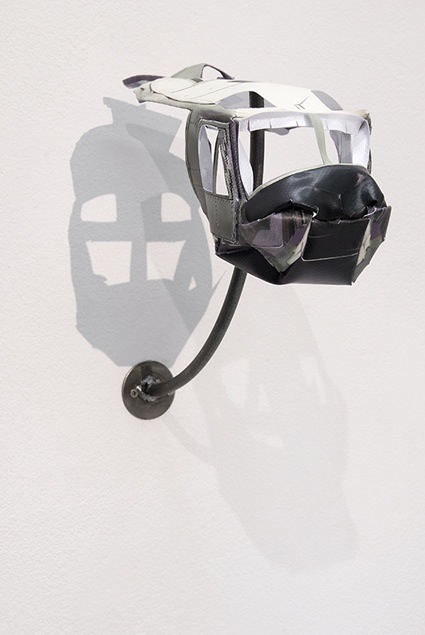 Thomas Cimolaï, Trophies from the Sixth Continent, 2010. Photo Patrick Galais
Thomas Cimolaï, Trophies from the Sixth Continent, 2010. Photo Patrick Galais
Another focus on one of the artworks i discovered at the GAMERZ festival in Aix-en-Provence in October…
The Trophies from the 6th Continent are lifeless, plastic ‘skins’ of computer generated models found in 3D environments. Deflated of any volume nor life, they were hanging in the gallery of the Ecole d’Art of Aix-en-Provence like bloodless carcasses. Cimolaï tracked down these hunting preys on the ‘sixth continent’, the land of our 3D digital entertainment made of video games, special effects, post-production works, etc.
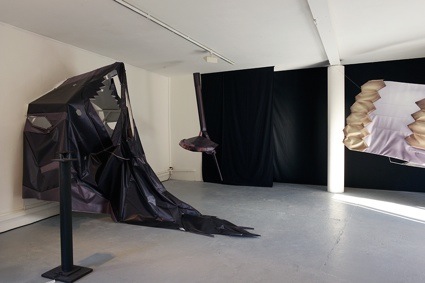 Thomas Cimolaï, Trophies from the Sixth Continent, 2010. Installation view at the GAMERZ festival. Photo Luce Moreau
Thomas Cimolaï, Trophies from the Sixth Continent, 2010. Installation view at the GAMERZ festival. Photo Luce Moreau
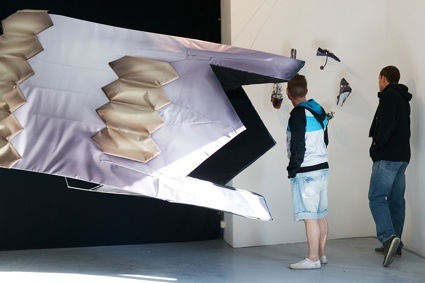 Thomas Cimolaï, Trophies from the Sixth Continent, 2010. Installation view at the GAMERZ festival. Photo Luce Moreau
Thomas Cimolaï, Trophies from the Sixth Continent, 2010. Installation view at the GAMERZ festival. Photo Luce Moreau
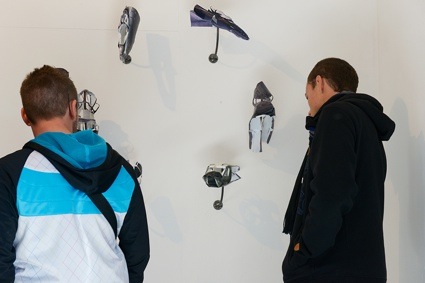 Thomas Cimolaï, Trophies from the Sixth Continent, 2010. Photo Luce Moreau
Thomas Cimolaï, Trophies from the Sixth Continent, 2010. Photo Luce Moreau
The concept and result are quite simple. Yet, they are brilliant. The empty plastic parts of vehicles are pitiful and you can’t help feeling sorry for these former glories of the screen.
Scroll down if you want to read the original french version of Thomas Cimolaï’s answers.
Hi Thomas! I read that the objects you brought into the gallery were originally protected by copyrights. Where did you find these objects? And why do you call them trophies?
The Trophies from the Sixth Continent constitute a fiction collection. The whole process is based on “an adventure story” developed from gestures made with a computer – vision, research, tracking, targeting, intrusion into forbidden territories and capture. The Sixth Continent is the land accessible through screens and through data transmission technology (in this case, internet). The collection includes the debris of computer generated objects found on the web and originally intended for video games and special effects.
Why was it important for you to engage with shapes protected by copy rights?
The attack on copyright is part of the game.
And once you’ve extracted these objects from their original universe, what remains of their copyright?
I think there’s nothing left, just like their shape and their initial state. They are out of order :).
What was the creation process that led from 3D virtual forms to these deflated, miserable bits of flying engines? How did you make them?
I was surfing on the net looking for a hat for a project inspired by the novel The Invisible Man when some objects attracted my attention. Engines belonging to memories of television such as the Iraq war, games or mythical fictions (Airwolf , Platoon, etc.) and that were all destined to simulation in video games and movie post- production. There began a fiction where the challenge was to be the main mode of relationship to my subject. Once the objects had been acquired, I looked for the technical way to understand their construction so that, gradually, I could disassemble their mechanism, as if it were a dissection, an anatomy. Once they had been re-appropriated, I decided to push the craziness further. The objects were pulled out of the screens, their original environment, and I brought them back to the “real” sometimes on a one-to-one scale. By doing so, I could appreciate the availability of their heads, of their wheels and other means of traveling or of their antennas and other detection tools. They were stripped of their power.
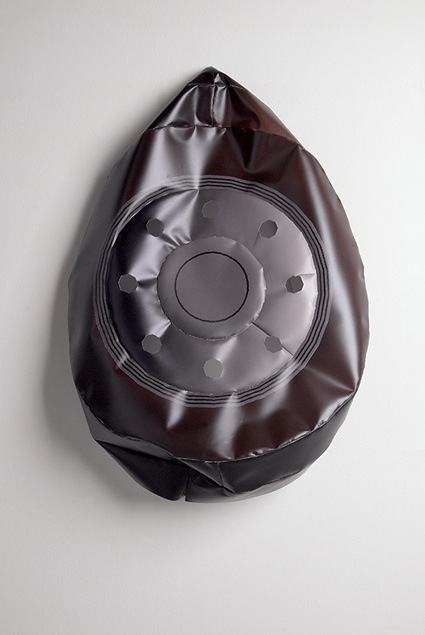 Thomas Cimolaï, Trophies from the Sixth Continent, 2010. Photo Patrick Galais
Thomas Cimolaï, Trophies from the Sixth Continent, 2010. Photo Patrick Galais
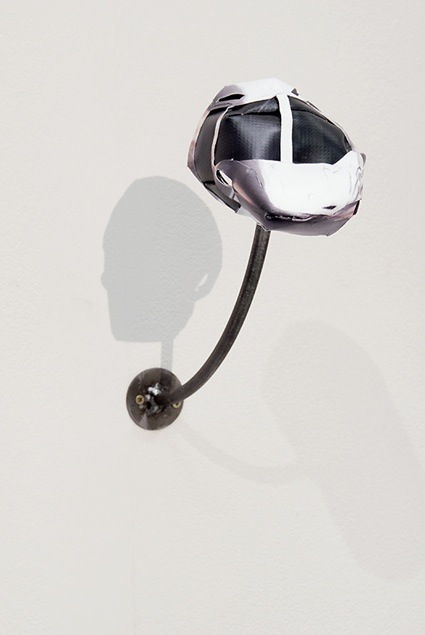 Thomas Cimolaï, Trophies from the Sixth Continent, 2010. Photo Patrick Galais
Thomas Cimolaï, Trophies from the Sixth Continent, 2010. Photo Patrick Galais
I fell really sorry for these objects. Am i slightly deranged or were you expecting these trophies to trigger some emotions in people?
There was absolutely no premeditation to cause emotions. I work with what I have in me, which is a certain way to look at issues related to freedom, to the industrial cultural object and to our relations with digital interfaces. This project embraces the concepts of play and power and also the desire to own. Everything is voluntarily orchestrated with symbolism and a mock-heroic tone.
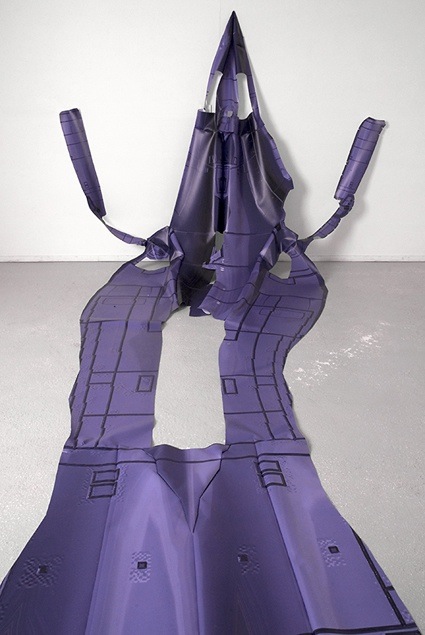 Thomas Cimolaï, Trophies from the Sixth Continent, 2010. Photo Patrick Galais
Thomas Cimolaï, Trophies from the Sixth Continent, 2010. Photo Patrick Galais
How do people used to see these objects ‘alive’ in video games react to the work?
They come not only from video games but also from special effects. The most recognized one is the big black head of the stealth aircraft called F-117 Nighthawk which first appeared in conflicts broadcast on TV and soon after in games Night Storm, Empire Earth or Zero Hour which I have not played. Then, because the collection is partitioned into categories relating to motor, sensory devices…. few people can remember which wheel, radar or reactor belongs to which vehicle. The younger generations tell me that “it’s cool” or “that’s interesting” and will see the logic of simulation and of video games pushed to their limits.
Merci Thomas!
——————————
Version française de l’entretien:
I read that the objects you brought into the gallery were originally protected by copyrights. Where did you find these objects? And why do you call them trophies?
Les trophées du sixième continent constituent une collection fiction. Toute la démarche est basée sur « un récit d’aventure » élaboré à partir des gestes effectués avec un ordinateur – vision, recherche, traque, ciblage, intrusion en territoires défendus et capture. Le sixième continent est le territoire accessible par les écrans et par les technologies de transmissions de données (ici, internet). La collection regroupe des dépouilles d’objets de synthèses trouvés sur la toile et destinés à l’origine aux jeux vidéos et aux effets spéciaux.
Why was it important for you to engage with shapes protected by copyrights?
L’attaque du copyright fait partie du jeu.
And once you’ve extracted these objects from their original universe, what remains of their copyright?
Je crois qu’il n’en reste rien, comme de leur forme et de leur état initial. Ils sont hors service :).
What was the creation process that led from 3D virtual forms to these deflated, pitiful bits of flying engines? How did you make them?
J’étais sur le net à la recherche d’un chapeau pour un projet inspiré du roman de l’homme invisible quand certains objets ont attirés mon attention. Des engins appartenant à des souvenirs de télévision comme la guerre d’Irak, de jeux ou encore à des fictions mythiques (Supercopter, Platoon…) et qui avaient tous comme destinés la simulation dans des jeux vidéo ou la post-production cinématographique. Une fiction où le défi serait le principal mode de relation à mon sujet commençait. Une fois les objets acquis, j’ai cherché le moyen technique d’en comprendre la construction pour petit à petit en démonter la mécanique, comme une dissection, une anatomie. Une fois réappropriés, je décidais d’aller plus loin dans le délire. Les objets ont été extirpés de leur milieu initial, c’est-à-dire les écrans, et je les ai ramené dans le « réel » parfois à l’échelle un. Ainsi je pouvais apprécier la mise à disposition de leurs têtes, de leurs roues et autres moyens de déplacements ou encore de leurs antennes et autres outils de détection. Ils étaient défaits de leur pouvoir.
I fell really sorry for these objects. Am i slightly deranged or were you expecting these trophies to trigger some emotions in people?
Absolument pas d’émotions à provoquer de manière préméditée. J’ai fonctionné avec ce qui me constitue, c’est à dire un certain regard sur les questions liées à la liberté, à l’objet culturel industriel et à nos relations avec les interfaces numériques. Ce projet embrasse des notions de jeu et de puissance et aussi de désir de possession. Le tout mis volontairement en scène avec du symbolisme et sur un ton heroï-comique.
How do people used to see these objects ‘alive’ in video games react to the work?
Ils n’appartiennent pas seulement aux jeux vidéos mais aussi aux effets spéciaux. Celui qui est le plus reconnu est la grande tête noire de l’avion furtif dénommé Faucon de nuit – Nightfalcon f117 qui est d’abord apparu dans les conflits retransmis à la télévision puis a rapidement été le sujet des jeux Night Storm, Empire Earth ou encore Heure H auxquels je n’ai pas joué. Ensuite, comme la collection est compartimentée en catégories relatives à la motricité, aux appareils sensitifs…, peu de personnes peuvent se rappeler à quel véhicule appartient telle roue, telle réacteur ou encore tel radar. Les générations plus jeunes me disent que « c’est cool » ou encore « c’est intéressant » et y voient la logique de la simulation et des jeux vidéos poussés à leurs paroxysmes.
Merci Thomas!
Previously:
Constance, an installation in weightlessness.
